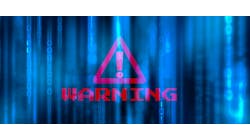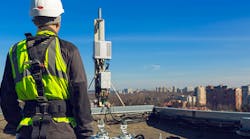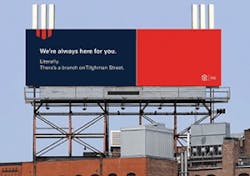Latest from Home
5G is the next generation of cellular network technology. That said, there are people and advocacy groups concerned about radiofrequency radiation (RFR) exposure to it. The concern isn’t new; but it is becoming more prominent. Questions mostly arise from the public about radiation exposure and the effects it could have.
People are wondering what effect RF has, and whether they are protected. As a Radiofrequency Radiation Safety expert, I’ll answer the 7 questions I receive the most.
Q: Is RF dangerous to the general public?
A: RF is not typically dangerous to those in the general public.
Most transmitters of RF are on building rooftops or on top of streetlights or utility poles. With 5G, we will see many more of these small cell configurations on the light or electric poles.
InvisiLight® Solution for Deploying Fiber
April 2, 2022Go to Market Faster. Speed up Network Deployment
April 2, 2022Episode 10: Fiber Optic Closure Specs Explained…
April 1, 2022Food for Thought from Our 2022 ICT Visionaries
April 1, 2022The key point you need to know is the FCC’s Maximum permissible exposure guidelines apply to 5G and cover the 5G frequency. On August 1, 1996, the Commission adopted the NCRP’s recommended Maximum Permissible Exposure (MPE) limits for field strength and power density for the transmitters operating at frequencies of 300 kHz to 100 GHz. 5G spectrum is typically between 24GHz to 47GHz and is therefore covered by the MPE limits.
Part of any FCC license application includes RF compliance, and those granted an application must show they comply with RF MPE. At the ground level with a 5G transmitter above you, the public is typically exposed to less than 1% of the uncontrolled or general public MPE limits. These levels are so low that "no temperature rise has been observed to date."
Cities can require RF compliance studies be done and proof of compliance be supplied. For example, Arlington, Virginia, has this in their contract, and it states, "independent radiation emission testing is required 60 days post-installation of each pole and allows the county to request additional testing any time afterward."
The FCC set 2 limits for how much RF people can absorb: one for the general public, and one for the worker known as the "occupational" limit. The worker’s limit is 5 times higher than that of the general public and is only for people trained to work near antennas. The Occupational level is still 10 times below the known range to cause health effects.
Configurations of small cells and 5G. This highlights some of the configurations. Many workers will have exposure to RF that did not have exposure before.
Q: But I heard someone say it could cause cancer?
A: Indeed, the World Health Organization’s International Agency for Research on Cancer (IARC) classifies RF radiation as "possibly carcinogenic to humans", however, the IARC considers overall evidence "Limited." It’s also critical to realize they also classify coffee in the same "possibly carcinogenic" category.
Q: So, we’ve talked about the public’s exposure, but what about those who work near a source of RF?
A: U.S. Senator Richard Blumenthal (D-Conn.) and Congresswoman Anna G. Eshoo (D-Calif.), ranking members of the House Communications Subcommittee sent a letter to the FCC on September 17, 2015, stating despite the FCC’s human exposure limits and current guidelines aimed to protect workers from harmful RF levels, recent reports have identified an estimated 250,000 workers at risk. They said beyond the hazards to cell tower workers of free-standing structures, the towers are now found atop all kinds of buildings, from apartments and schools to hospitals, churches, and fire stations. The letter stated, "Rooftop and building-mounted antenna sites also endanger not only the wireless industry’s trained RF technicians but also roofers, water proofers, electricians, carpenters, building maintenance personnel, HVAC technicians, painters, firefighters and other workers who may come in close proximity can be placed at risk of RF injuries."
Figure 1. Tower with transmitters. This illustrates why it is critical to assess each work site before performing work to determine if RF is present or is likely to be present.
Typically, we think of those working around RF to be cellular technicians or tower climbers. However, since cell sites are everywhere, including rooftops and light poles, many more workers have the potential for exposure, so they are required to be trained. Figure 1 shows a tower as well as a monopole with transmitters. This illustrates why it’s critical to assess each work site before performing work to determine if RF is present or is likely to be present.
RF is a physical hazard. Training is required so workers can recognize the hazard and control their exposure. Once a worker is trained and deemed competent and qualified by their employer, they can work legally and safely all day in an area under 100% of the controlled FCC human exposure limit.
Often those working in areas near wireless sites argue, "But, I won’t be in an area were RF is above the uncontrolled limit." The key thing to remember is the potential of the site to exceed that limit. If you are on a rooftop or working at heights, there is the potential for RF to be over the uncontrolled levels. RF is a physical hazard, so OSHA expects a plan to be in place, training to have been completed, and a way to mitigate exposure. That means they expect personal protection monitoring to be in use for those in areas that could be above safe levels.
Figure 2. RF can be anywhere. Do you think the billboard workers have been trained in RF safety? If working at elevation, training for RF should be routine.
In looking at the Figure 2 photo, do you think the billboard workers have RF training or are trained on how to ensure they are not overexposed? It’s very possible that these workers were not trained in RF safety even when OSHA legally requires that they are.
As the Senator’s and Congresswoman’s letter states, over 250,000 workers could be unknowingly exposed. If you work in telecom you are probably trained. But what about the HVAC, electrical, utility, or maintenance, workers? Are they trained in RF? Probably NOT.
With future 5G small cell installations, many city, county, state, and utility, providers will see more RF transmitters on poles or lines in which they work. With this new hazard of RF, training is required. All employers, including the city and the utility, have a requirement to ensure a safe workplace.
A key point to remember is that annual training is the minimum. But that may not be enough, as training is to be provided as often as necessary to provide a safe workplace. It’s critical to ensure all workers who could be exposed to RF have proper training. This is a responsibility for all levels of the contracting chain as OSHA has a multiple employer work site rule.
Q: If a worker is required to exercise control over their exposure, what is the best way to do this?
A: Lockout Tag out and power down is the best way to control exposure. However, if the site is remotely powered down, then it can be remotely powered back up. I got a call just last month about a 50,000-watt radio station being remotely turned back on, and it resulted in 3 climbers being overexposed to RF. Another issue is that most of the time it’s difficult to coordinate a power down.
Personal protection monitors are critical to any fully functioning RF safety program. Monitors must have a wide frequency range to ensure coverage at all potential frequencies including 5G. It is also important that monitors are used correctly; employees must be trained on the monitor before usage.
The RF personal protection monitor has precedence above ALL other things such as signage and barriers. The RF monitor is taking real-time readings, while signage and barriers were placed using previously determined RF levels. And things change quickly on telecom sites.
It’s critical to note that if an employee is in an area above 100% of the controlled/occupational limits, then the MPE data must be stored in the employees’ medical records for medical surveillance. These records must be kept for the duration of the employment plus 30 years. In response to this danger, OSHA requires right-of-access to exposure records if an employee is subjected to a toxic substance or harmful physical agent. These records show the level of RF exposure the employee was subjected to. By law, employers are required to inform all employees of such hazards upon their initial employment and at least annually thereafter.
Q: So 5G is safe?
A: According to current research and studies, if RF exposure is within the FCC guidelines for maximum permissible exposure, it’s safe. Knowing and ensuring you are within those guidelines takes training and understanding. An RF Program should be a part of the normal health and safety plan for those who work in and around 5G.
Q: So, do we all need continuous monitoring?
A: We are continuously exposed to RF. From Wi-Fi to cellular, we are always connected and are always exposed. Therefore, it’s critical to continue doing long-term studies. We need to always be open to learning, and to be willing to revise regulations as necessary to keep people safe.
Speed limits change, cellular usage while driving laws change, and RF is no different. As we research and accumulate data, we must be willing and open to changes. Just as with tobacco and asbestos, studying the effects over time is critical to safety.
Europe, and even parts of Brazil, have installed devices to continuously monitor the RF in specified areas. These devices transmit the levels back to a web page, and enable the public to log in and see what the RF levels are in a particular area.
Area monitors are devices that work similarly to smoke detectors. They are small and can be put anywhere to monitor RF levels. These could be placed on street poles or inside office buildings or sports stadiums. These permanent and continuous RF monitors are becoming the standard in many European locations. This is one strategy a city, state, or federal, government could use to educate the public and ease their fears.
Q: Does the FCC have a Safety Program?
A: The FCC has set standards for human exposure and safety. If the exposure is kept below radiated power, it is not proven to be harmful. Because RF is a physical hazard, OSHA requires an RF safety program that includes:
1. Administration/enforcement of the RF program
2. RF Training for anyone that could be exposed to RF
3. RF personal protection monitors
4. RF Hazard assessments that show compliance
5. RF Signage/Barriers
To be in compliance with Radiofrequency radiation requirements is NOT difficult. With the above-listed steps, employers are ensured workers are safe. Precedence has been set, and cities can request RF compliance to ensure employee and citizen safety. By having RF surveys and educating constitutes, this assists both the City and the Carrier in streamlining 5G deployment.
As technology evolves, so will Radiofrequency Radiation exposure concerns. Wireless is a common component of our daily life. Understanding what 5G is and how to work around it safely ensures we have access to the best possible wireless solutions and also remain safe.
Like this Article?
Subscribe to ISE magazine and start receiving your FREE monthly copy today!
https://www.digitaltrends.com/mobile/is-5g-dangerous/
https://www.apple.com/legal/rfexposure/iphone5,1/en/
https://www.cnet.com/news/court-upholds-berkeleys-right-to-warn-consumers-about-phone-radiation/
https://www.samsung.com/us/Legal/PHONE-HS_GUIDE_English.pdf
https://www.cdph.ca.gov/Programs/OPA/Pages/NR17-086.aspx











